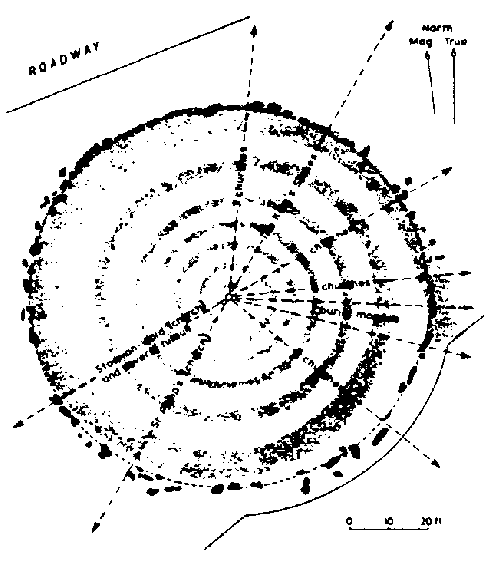 |
Science Frontiers ONLINE No. 26: Mar-Apr 1983 |
|
|
Archeology in britain: straying from the party line
In the final 1982 issue of New Scientist, Paul Devereux and Robert Forrest relate the history of leys in England. Leys are supposedly the intentional spotting of megalithic sites along straight lines extending several kilometers. Some alignments occur through chance, but several leys seem statistically significant. The puzzle is why ancient peoples bothered to align their edifices -- assuming they really did.
Most professional archeologists believe leys to be figments of the imagination of amateurs. This being so, they must be incensed by the claims made two weeks later in New Scientist. There, stimulated by the earlier report on leys, a retired engineer presented his measurements of the magnetic fields around the Rollright Stones. He maintained that he was able to magnetically detect several converging leys and, in addition, a spiral pattern inside the stone circle. A psychic accompanying him independently perceived the leys and spiral.
(Devereux, Paul, and Forrest, Robert; "Straight Lines on an Ancient Landscape," New Scientist, 96:822, 1982. Also: Brooker, Charles; "Magnetism and the Standing Stones," New Scientist, 97:105, 1983.)
Comment. Psychics, especially dowsers, have long maintained that megalithic sites are the foci of mysterious forces, notably spirals. This is pretty wild stuff for a respected science journal to print. The editors would be well-advised to send someone with a magnetometer down to the Rollright Stones to straighten out this matter.
 | Magnetically located leys and spiral at the Rollright Stones, England. |